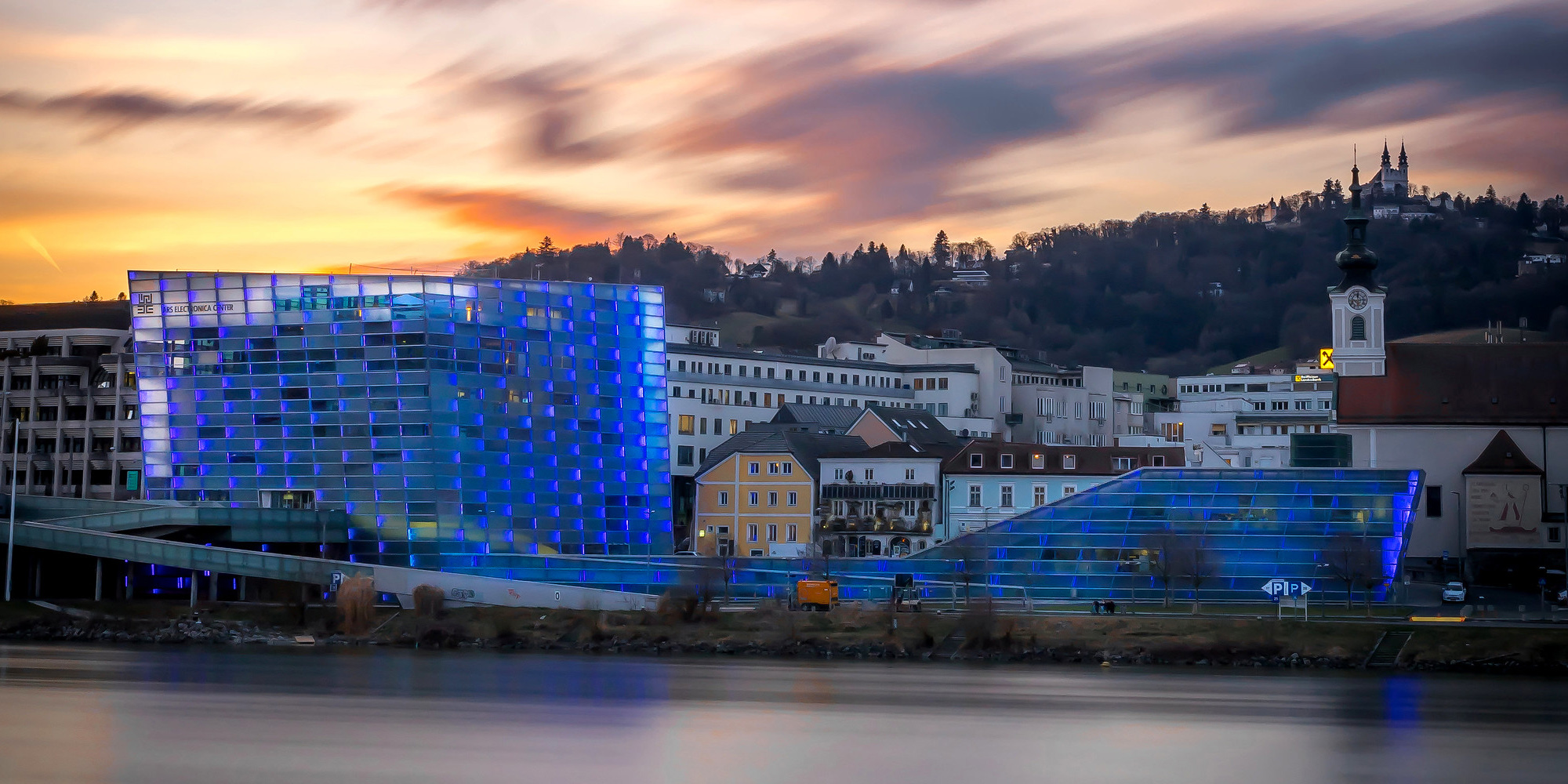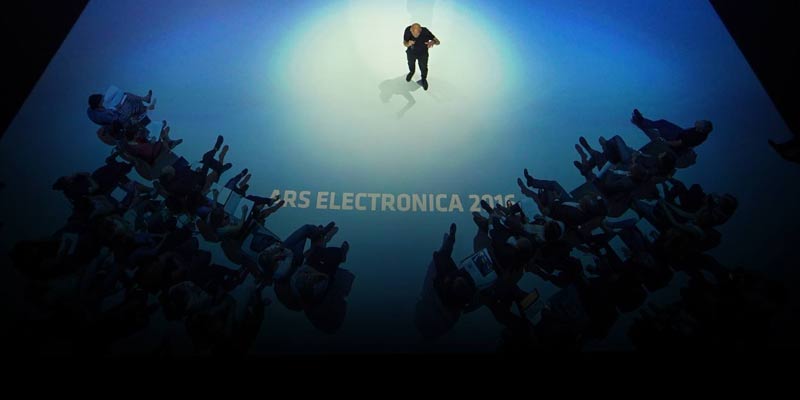Record attendance despite months of partial closure
Pressetext als PDF
Photo collection of the Ars Electronica Center on Flickr
The year in retrospect / Teil 1 / Teil 2
Ars Electronica Blog
(Linz, 2.1.2020) 192,243 visitors in 2019 represent an increase of 8.7 per cent compared to 2018 and a new record for the Museum of the Future. “Apart from the Linz Capital of Culture year, we’ve never had so many visitors,” Gerfried Stocker and Diethard Schwarzmair, Ars Electronica’s Managing Directors, sum up the 2019 museum balance sheet. The huge rush is gratifying in two respects: “Firstly, because we completely redesigned the Ars Electronica Center between January and June, which meant that the building was partially closed for months. On the other hand, the huge rush shows that we’ve hit a nerve with the topic of artificial intelligence and that our new exhibitions are very well received,” say Gerfried Stocker and Diethard Schwarzmair. “The new Ars Electronica Center is a hit, and it’s a hit right across all age and educational levels,” said Doris Lang-Mayerhofer, Chairwoman of the Ars Electronica Advisory Board. “It’s also gratifying to note that never before have so many companies and institutions booked tours and workshops for their employees as now. A survey that has been ongoing since the reopening in June 2019 underlines the high appeal of the new Ars Electronica Center: Nearly 80 percent of visitors said they were very satisfied, another 20 percent were rather satisfied with the facilities on offer. The length of stay is also remarkable: More than two-thirds of visitors stayed at the Ars Electronica Center for more than 2 hours, while nearly 10 percent even spent more than 4 hours here.
Artificial intelligence meets with great interest
Artificial intelligence is on everyone’s lips, but in which applications is it actually used today? How do these systems work and are they really intelligent? These and other questions have been dominating all the exhibitions and labs at the Ars Electronica Center in Linz since mid-June. Here, the hype surrounding AI is put to the test and questions are asked about what its application means for us and our daily lives. This is being done in the typical Ars Electronica style: with interactive stations where AI systems can be trained, scenarios are shown that allow you to watch an AI system “thinking” and a mediation concept that focuses entirely on dialogue and experimentation.
New job description: Tech-trainers
“In the course of redesigning our exhibitions and laboratories, we have also significantly developed our mediation concept,” says Gerfried Stocker. The result is a completely new job description: the tech-trainer. They combine the professional competence of (museum) technicians with the didactic skills of (museum) educators and are intended to contribute to the demystification of technology. “Our new tech-trainers work in the Machine Learning Studio, where they assemble, reassemble and reprogram machines in front of and with our visitors. The aim is to make the hardware and software tangible and thus make technology understandable”. The visitor survey proves that this concept is working: 97 percent said that the support provided by the info-trainers and tech-trainers helped them to gain a better understanding of the exhibition contents.
The jury of the AK-Zukunftsfonds therefore considers the new tech-trainers in particular to be a “lighthouse project worthy of support”, and the Deutsches Museum in Munich has already registered great interest in the new job description.
New and old crowd pullers
So the new exhibitions are all very well received. At the top of the popularity scale is the exhibition “Understanding AI”, where AI systems can be trained and watched “thinking”. The “Machine Learning Studio”, in which autonomous (model) vehicles are trained and robots with face recognition are programmed, has also been very well received. The “AI x Music” exhibition is also very popular, with its historical music machines and the Bösendorfer computer grand piano, which plays pieces composed with the help of AI. The new children’s research laboratory, on the other hand, is the undisputed leader among young visitors. The children’s book “Da ist Tardi – ein Bärtierchen unterwegs im Ars Electronica Center”, written by the Ars Electronica Center’s info-trainers themselves, also plays its part. Although not new, the Deep Space 8K is still an absolute highlight for many visitors. Developed by the Ars Electronica Futurelab, the projection and presentation room has been scoring points with the public since this summer not only with new artistic applications but also, and above all, with a walk-in 3D model of the Pyramid of Giza.
http://www.flickr.com/photos/arselectronica/47959567957/
SEER / Fotocredit: vog.photo / Printversion
http://www.flickr.com/photos/arselectronica/49135872188/
Neural Network Training / Fotocredit: vog.photo / Printversion
http://www.flickr.com/photos/arselectronica/47957240838/
Orbit – A Journey Around the Earth / Fotocredit: vog.photo / Printversion
http://www.flickr.com/photos/arselectronica/48125373641/
Animaker / Fotocredit: vog.photo / Printversion
http://www.flickr.com/photos/arselectronica/40654103213/
Ars Electronica Center / Fotocredit: Robert Bauernhansl / Printversion


